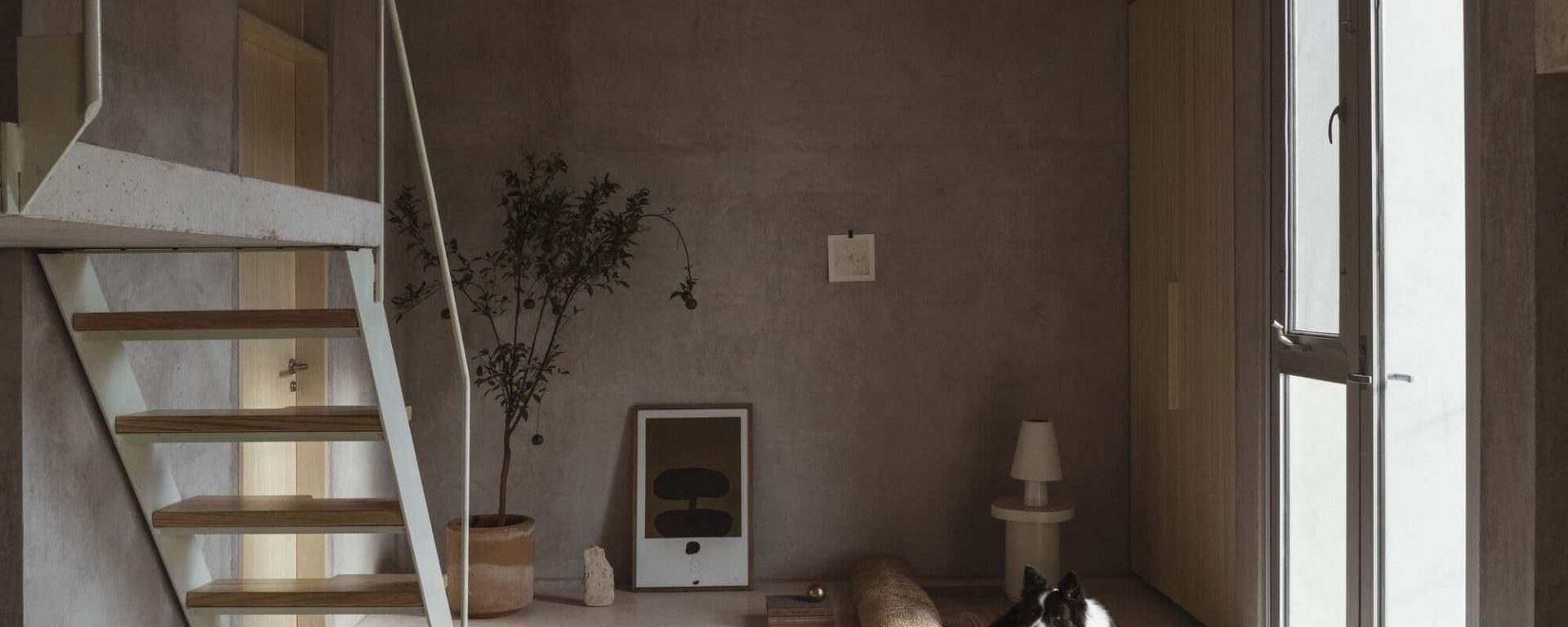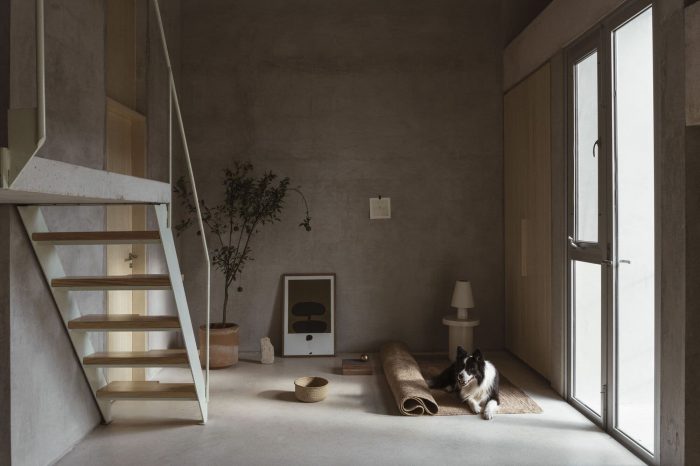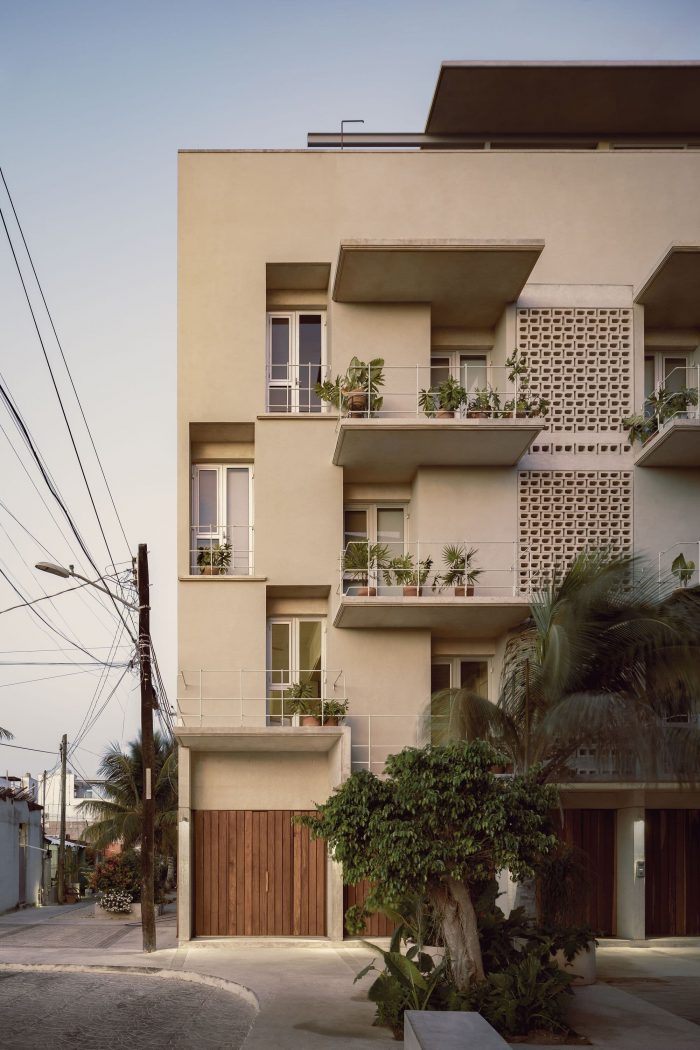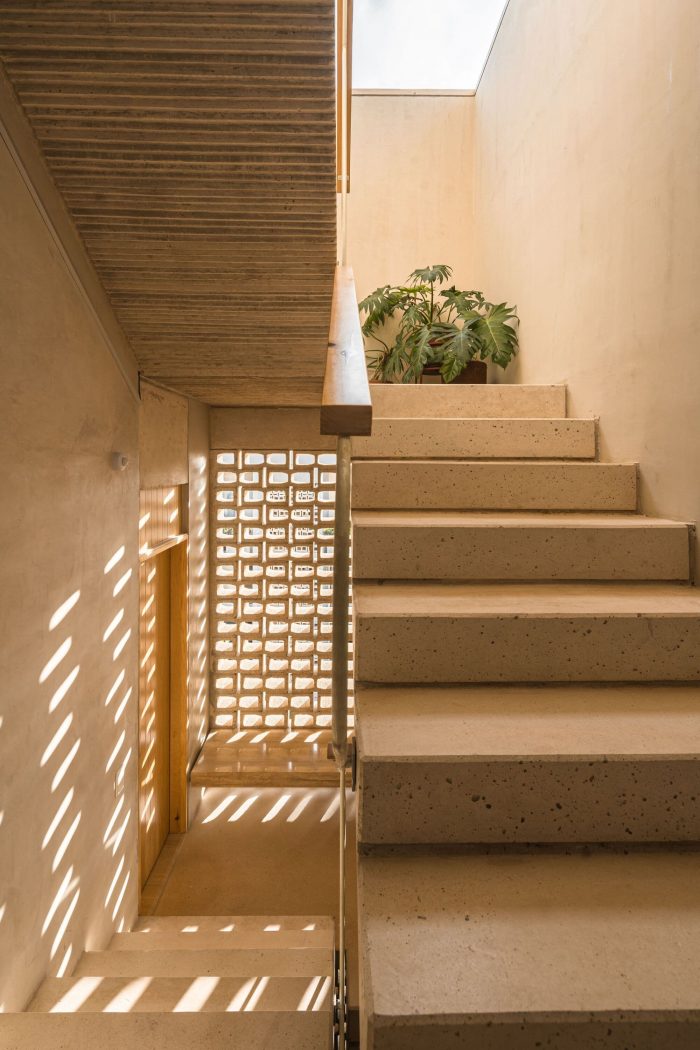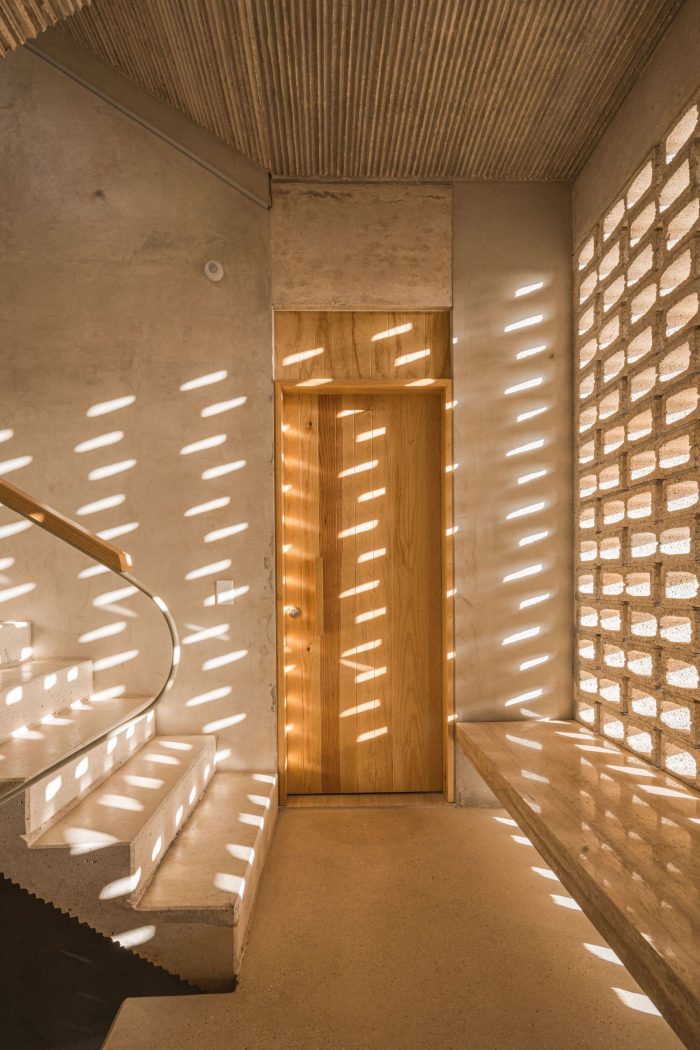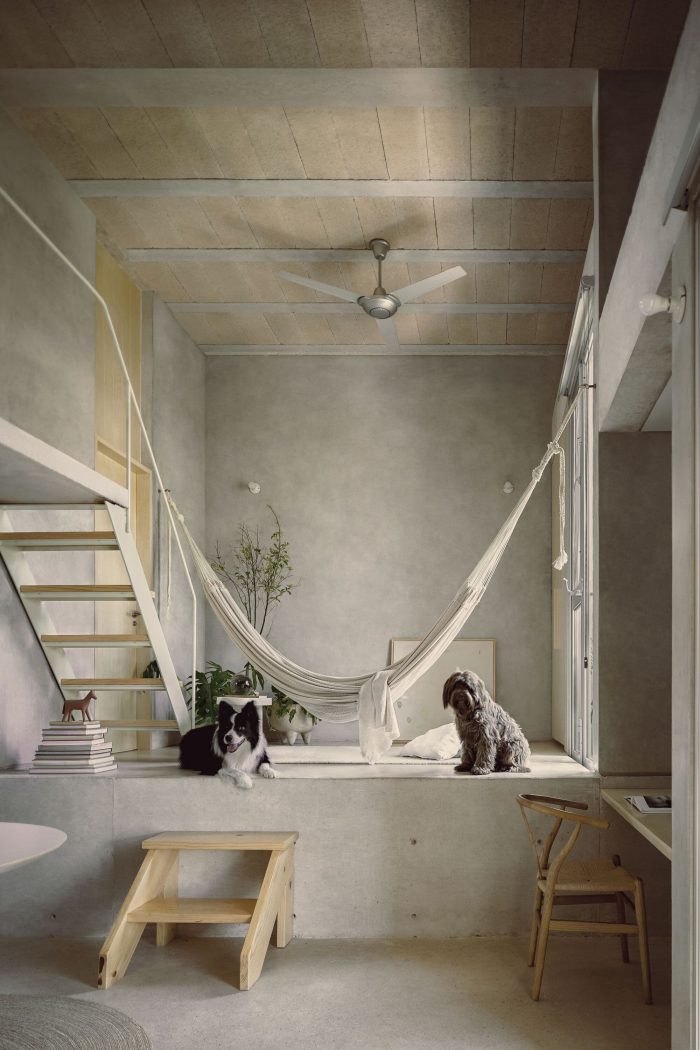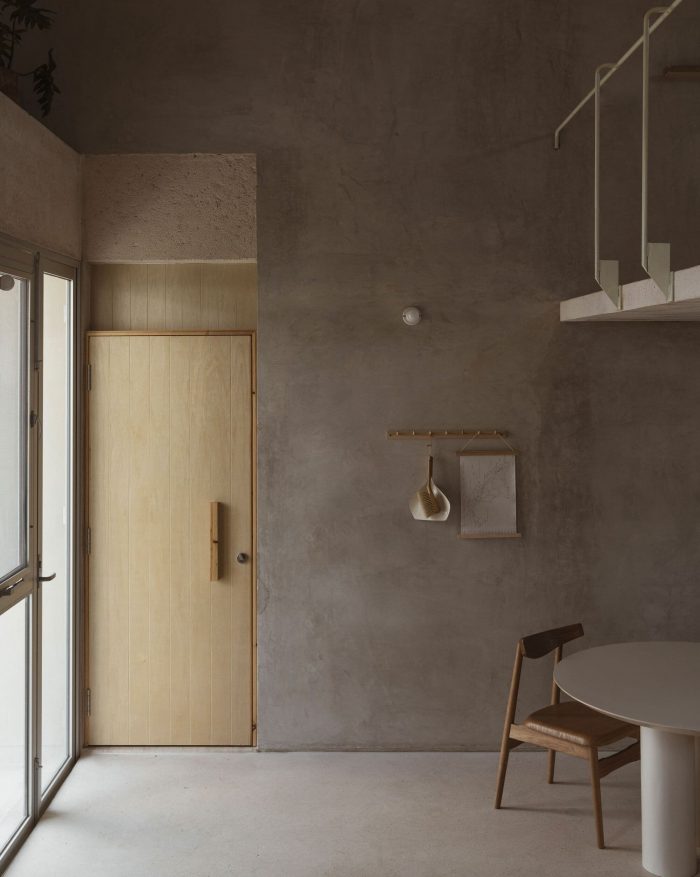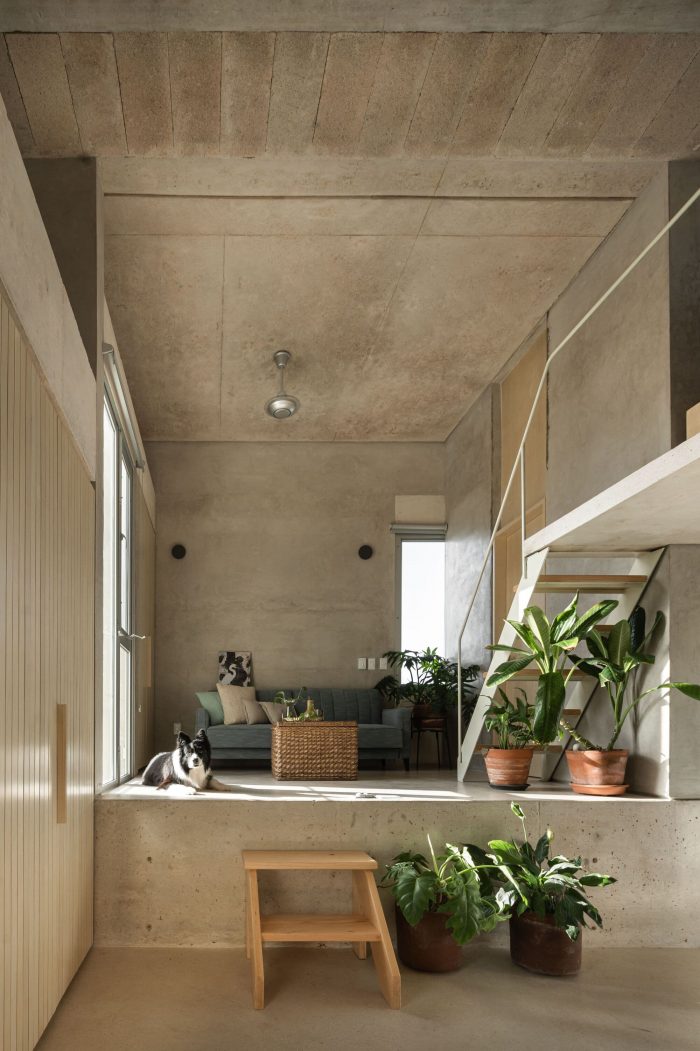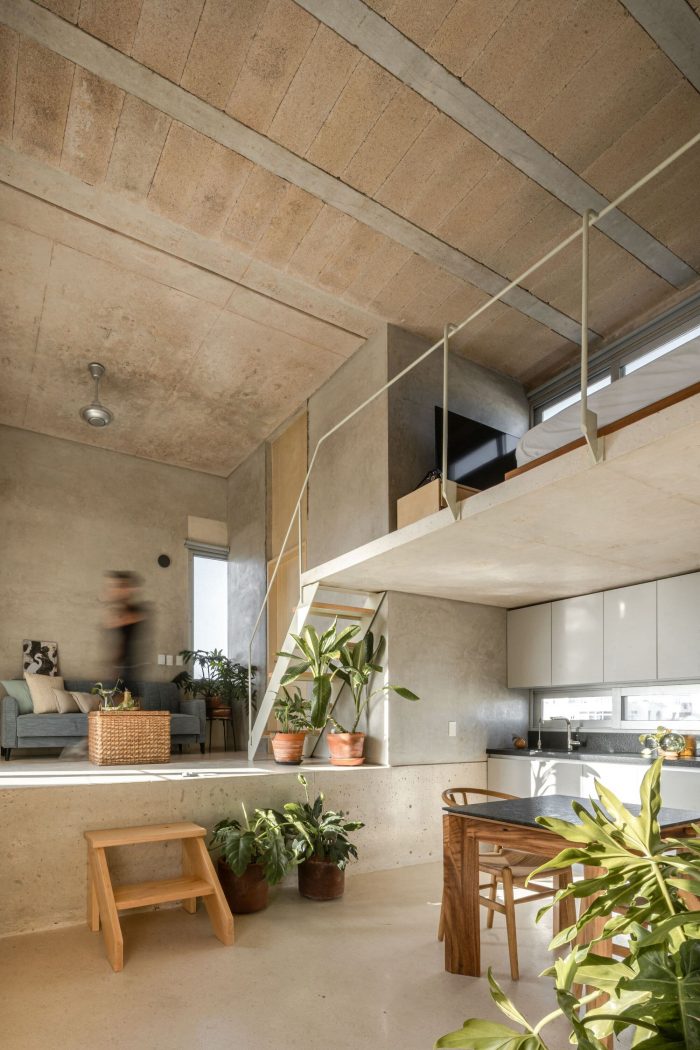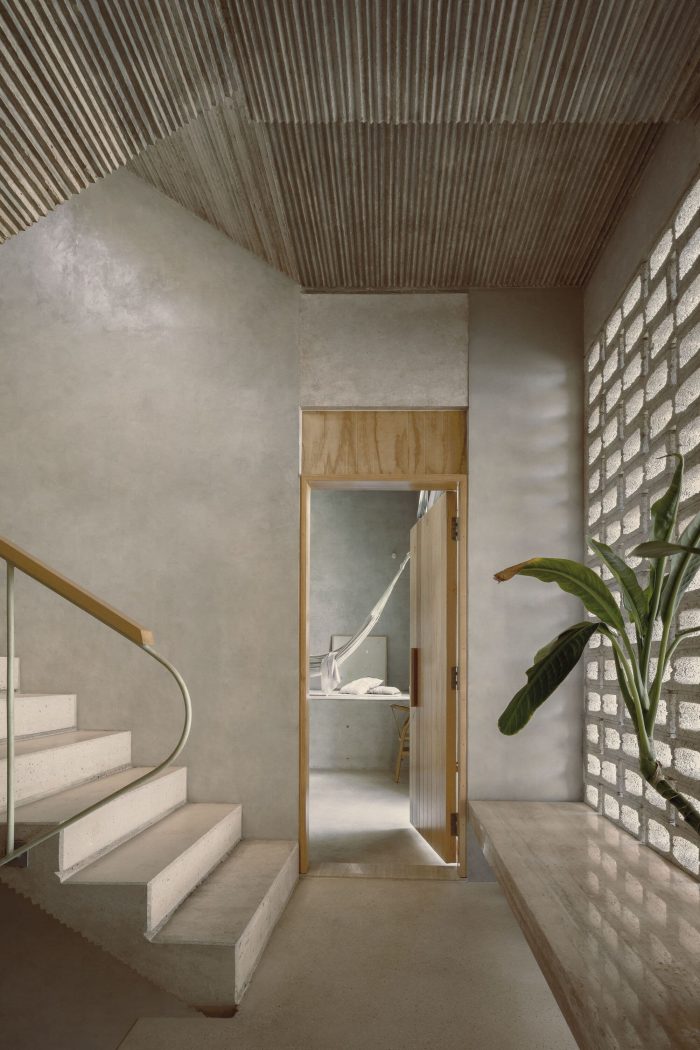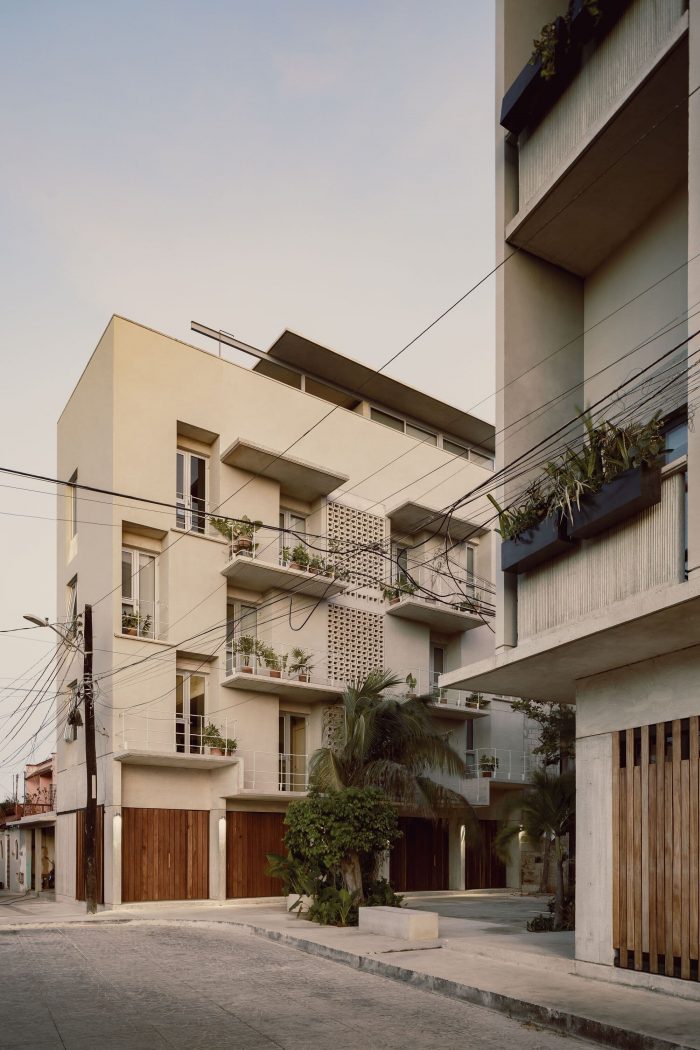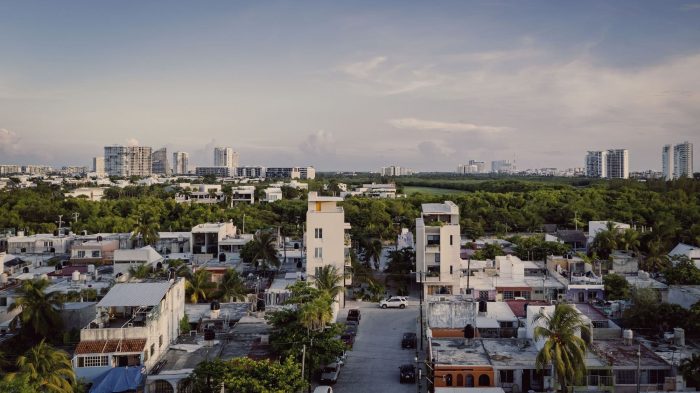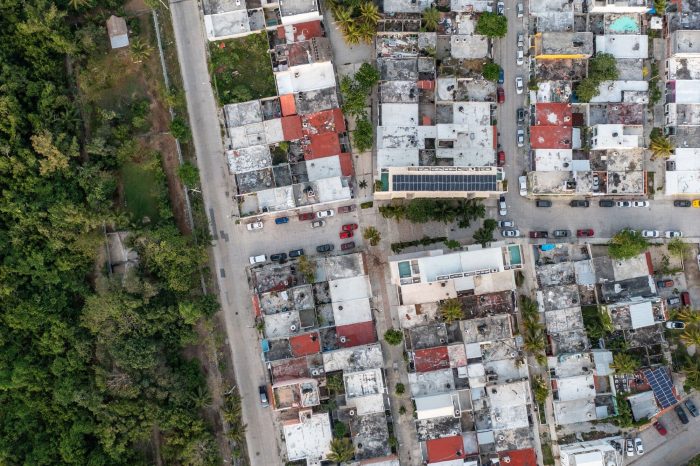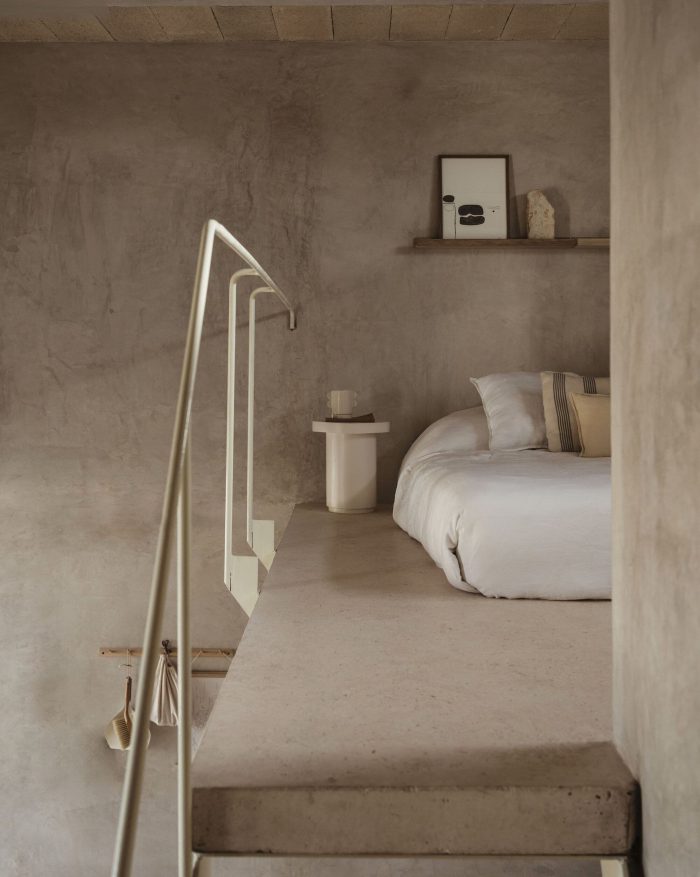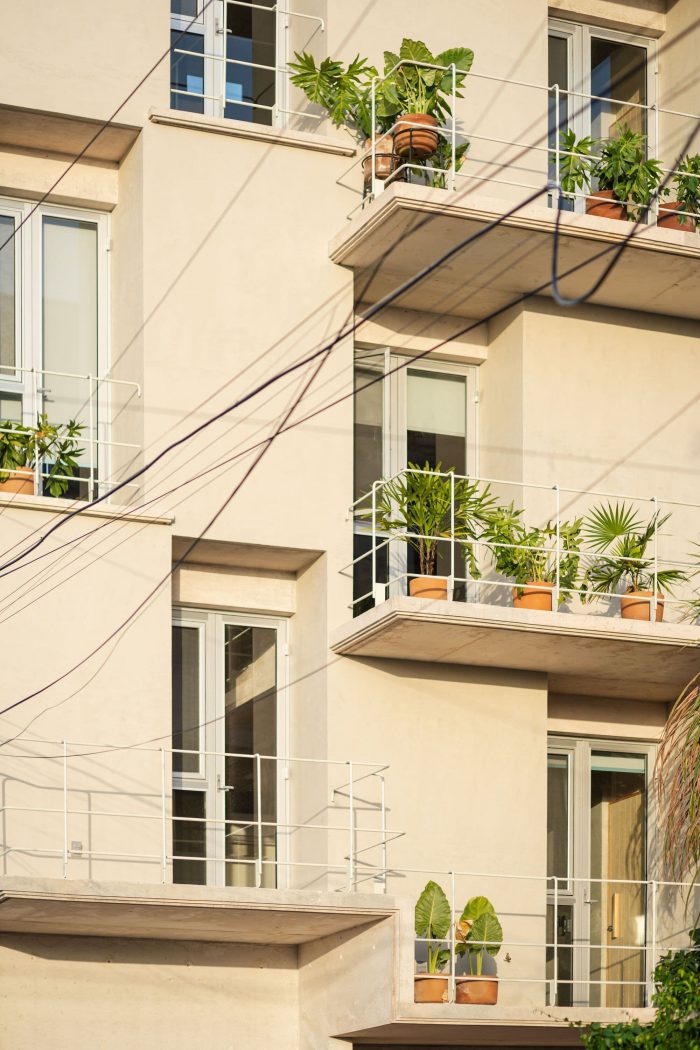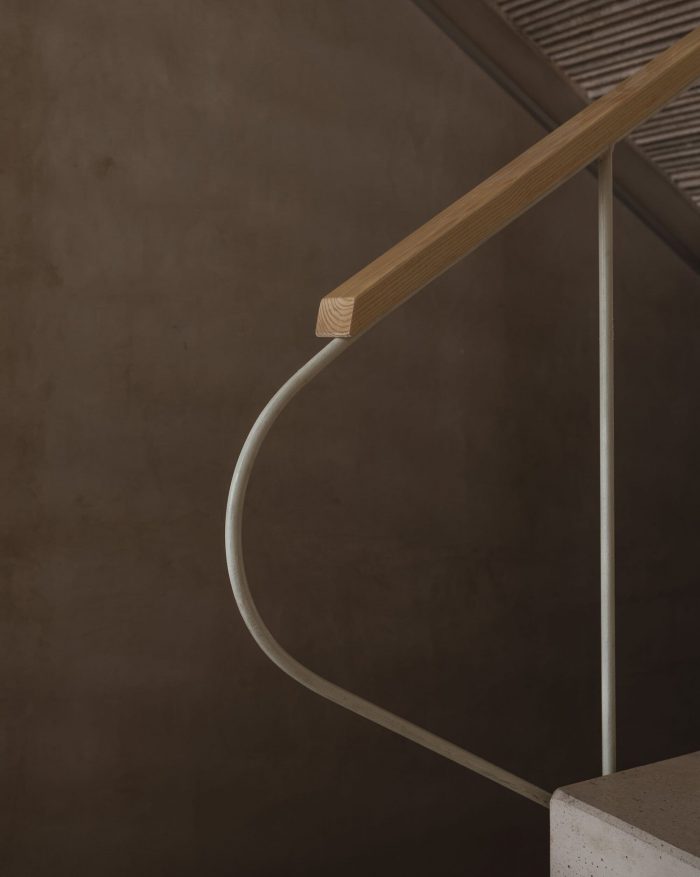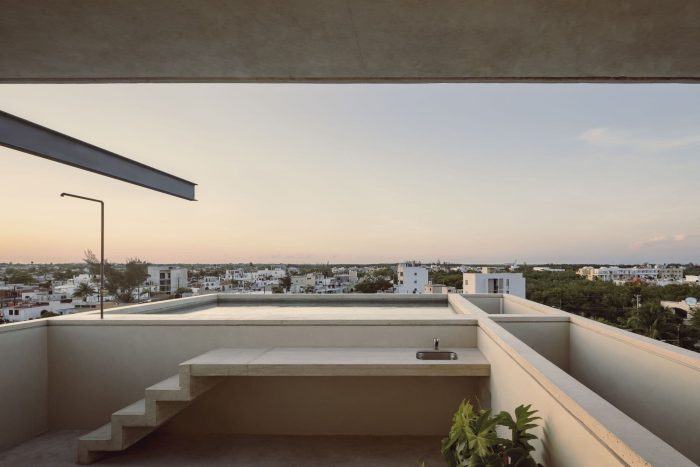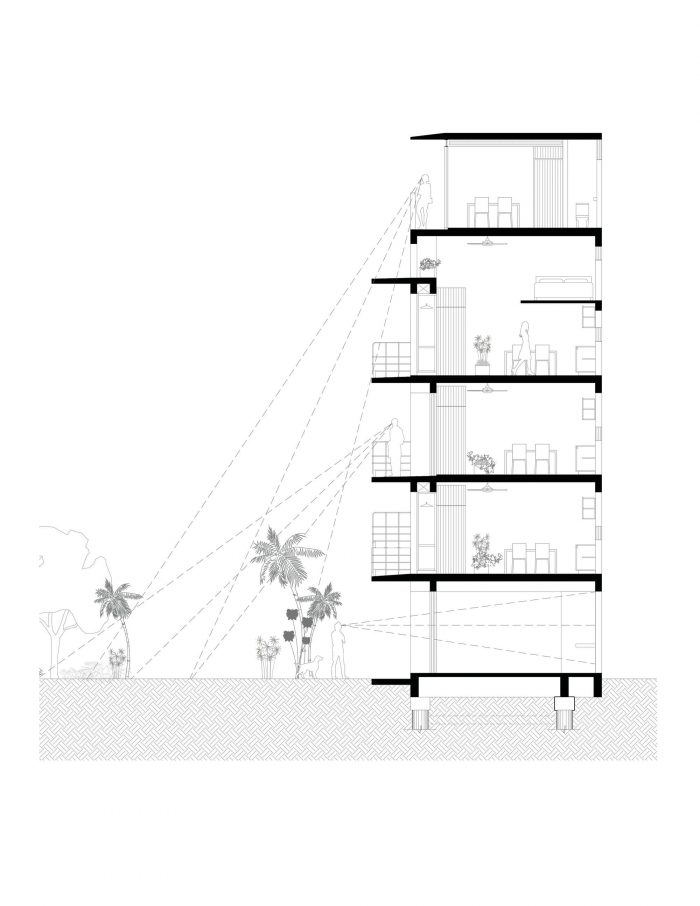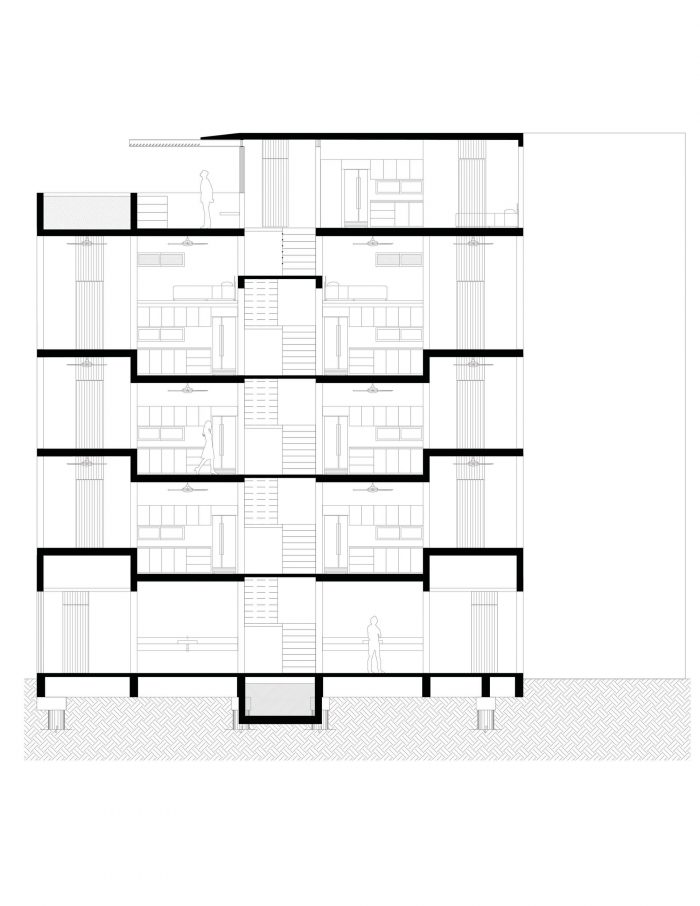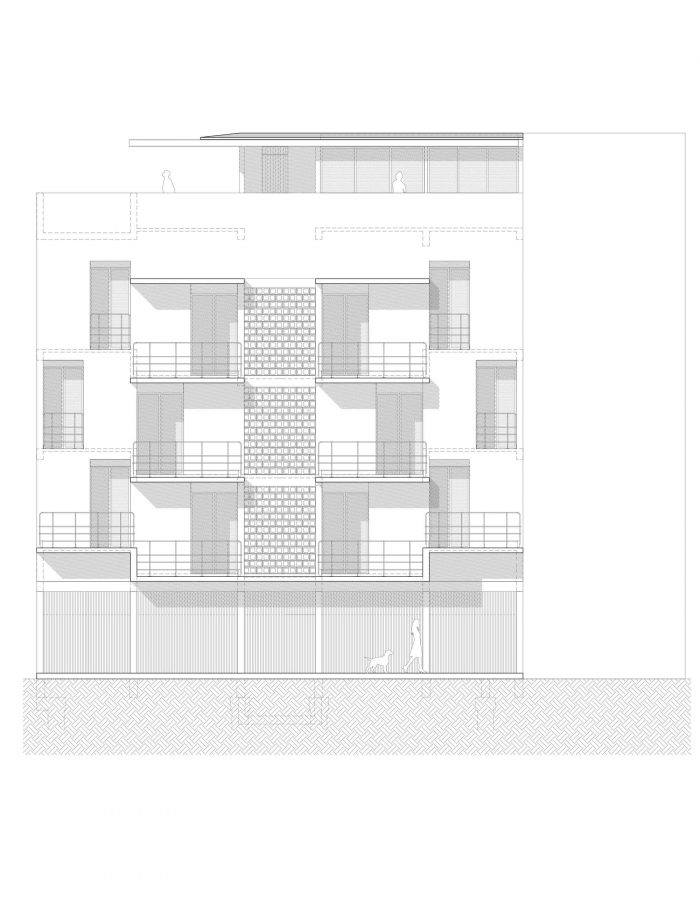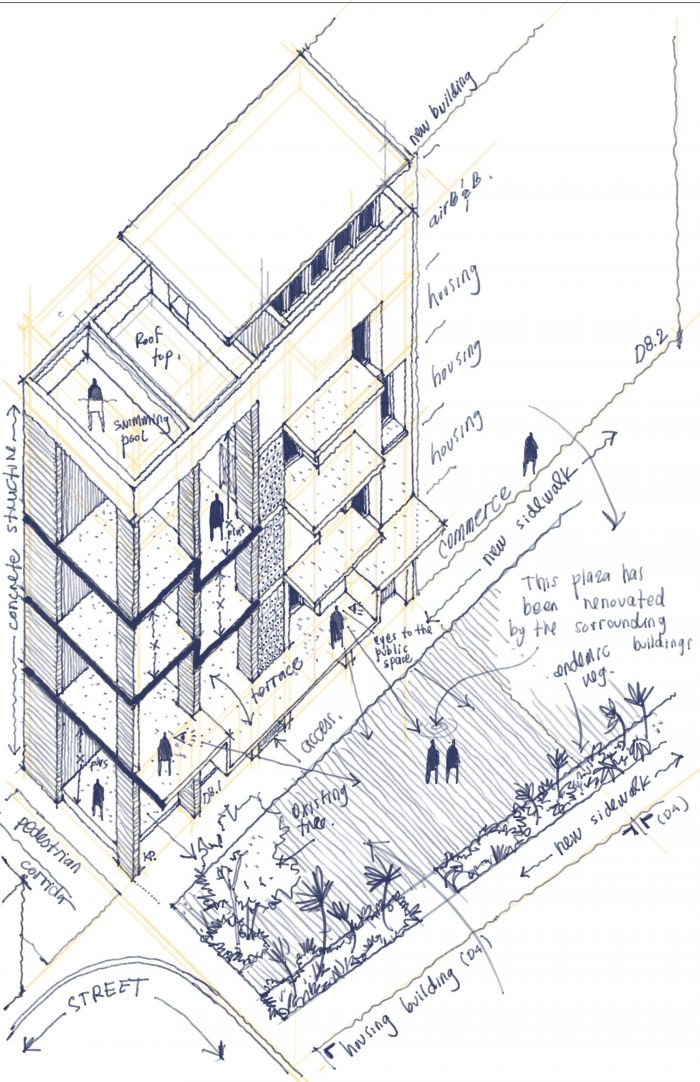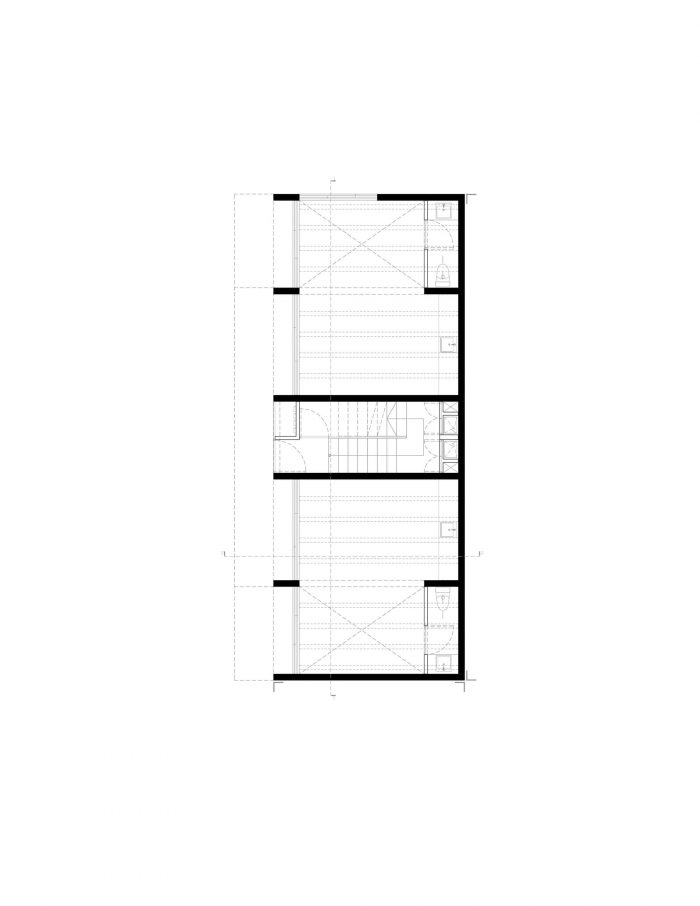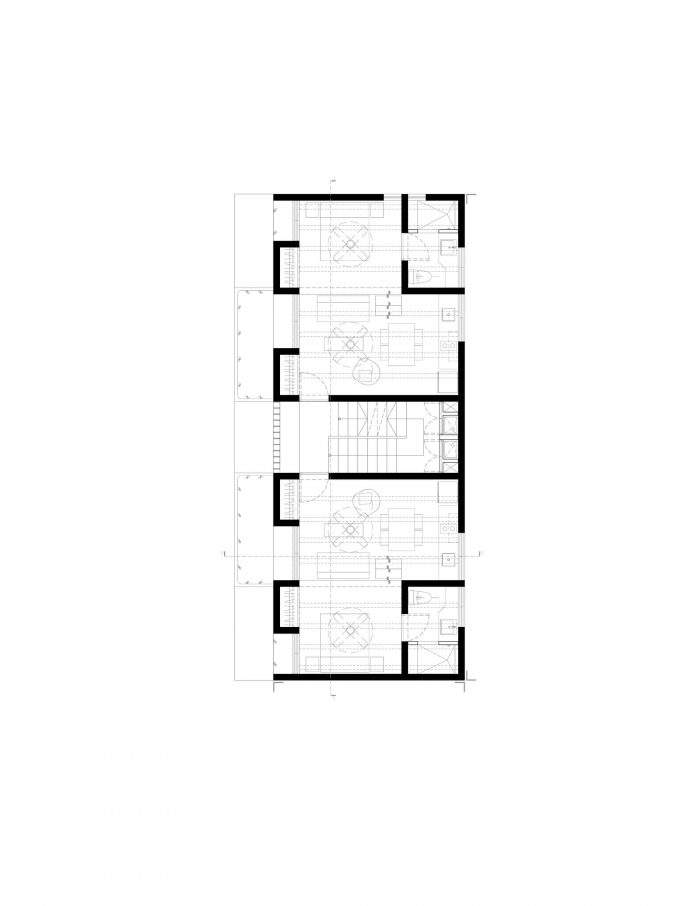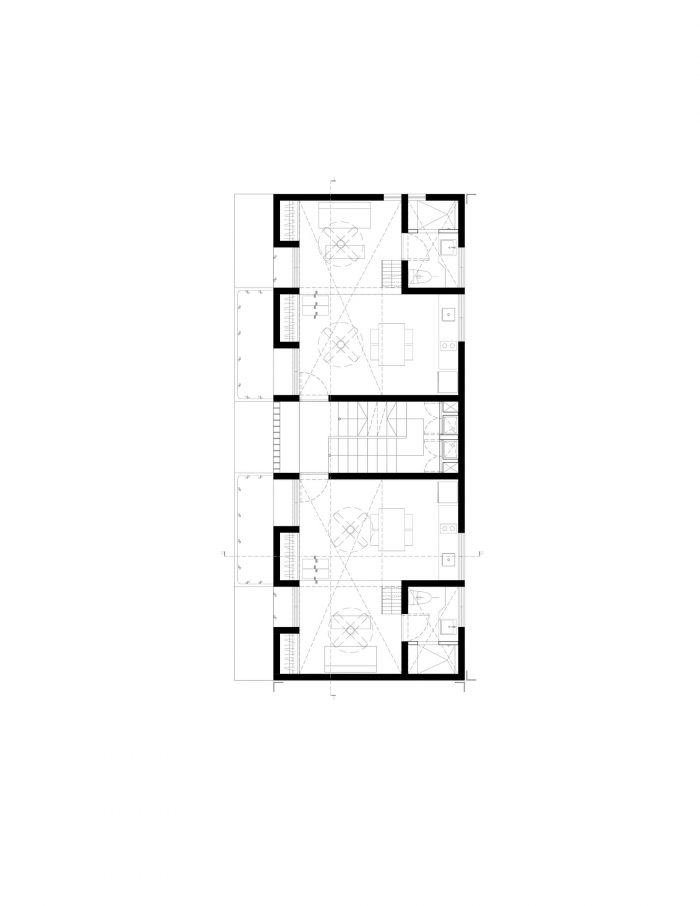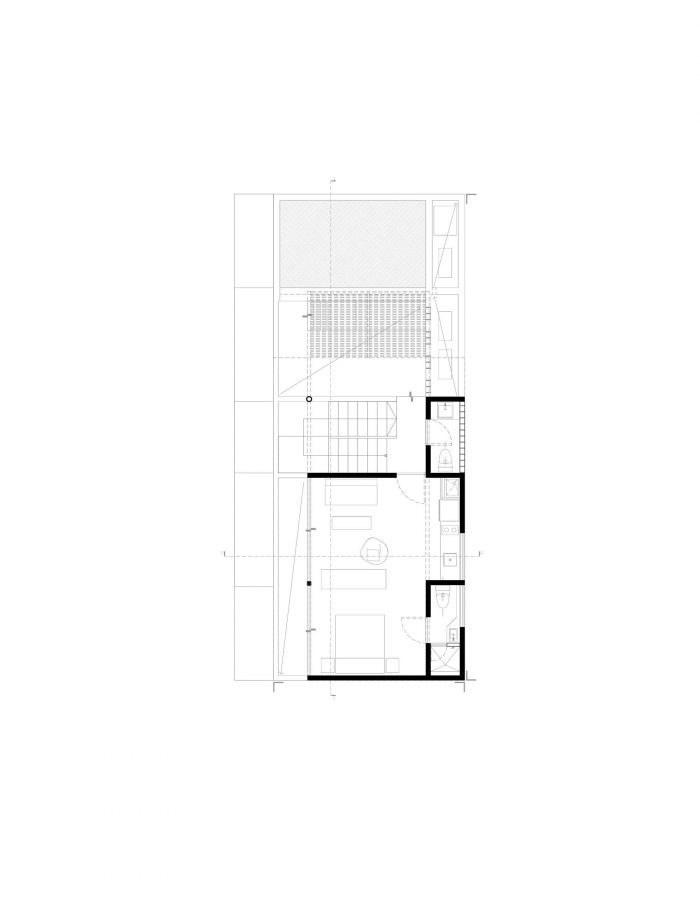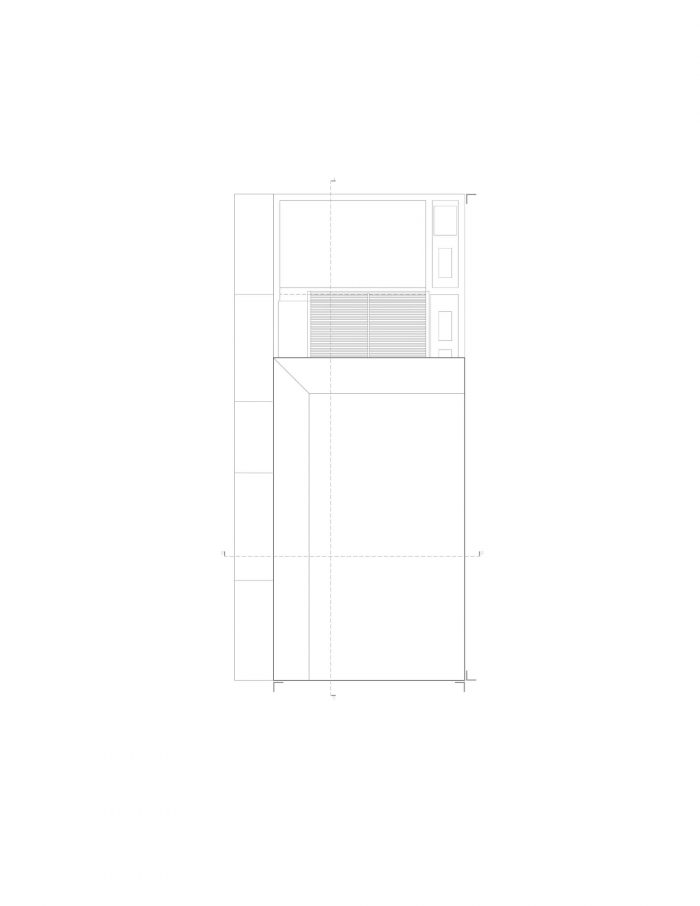Domus Peepem是一系列干预措施中最新的一项,通过新的住房计划和公共空间的再生,旨在恢复城市结构的一部分。它位于坎昆,该国最重要的旅游中心之一,有着明显的社会经济反差。这些干预措施的中心思想是建立可持续的建筑,具有社会使命感,整合而不是疏远。
Domus Peepem is the latest in a series of interventions that, through new housing schemes and the regeneration of public space, aims to recover a portion of the urban fabric. It is located in Cancun, one of the most important tourist centers in the country, with marked socioeconomic contrasts. The central idea of these interventions has been to build sustainable buildings, with a social vocation, integrating instead of distancing.
Donceles社区是一个在80年代开发的社区,作为工人的低收入住房群。在威尔玛飓风(2005年)之后,它遭受了相当大的破坏,导致许多房屋被遗弃并引发了高度的退化。Domus Peepem是对以前的干预措施的补充,旨在扭转这种恶化的局面。它位于一个角落,在88平方米的土地上,在社区的一个人行道上,在一个废弃的公共空间前。这个公共空间被恢复,以便把它变成一个广场和一个完全翻新的人行道。
The Donceles neighborhood is a neighborhood that was developed in the eighties as a group of low-income housing for workers. After Hurricane Wilma (2005) it suffered considerable damage, which led to the abandonment of many homes and triggered a high degree of degradation. Domus Peepem, an addition to the previous interventions, seeks to reverse this deterioration. It is located on a corner, on an 88m2 lot, on one of the neighborhood’s pedestrian walkways, and in front of an abandoned public space. This public space is recovered in order to transform it into a square and a completely renovated pedestrian walkway.
Domus Peepem被认为是一个可以让不同情况的人共存的地方:没有孩子的夫妇、年轻的专业人士、开始人生新阶段的人,以及通过数字平台租赁的游客。不仅是附近的居民与新居民共存,而且还有其他国籍的旅行者。诸如此类的干预措施,通过私人投资,使公共空间得以恢复,居民得以参与,新居民得以拥有高效住房和高质量的公共空间。
Domus Peepem was thought of as a place where people of different profiles can coexist: couples without children, young professionals, people starting a new stage in their lives, and tourists who rent through digital platforms. Not only do the residents of the neighborhood coexist with new inhabitants, but travelers of other nationalities as well. Interventions such as this have allowed, through private investment, the recovery of public space, for residents to participate and for new inhabitants to have efficient housing and high-quality public space.
这些公寓,无论大小,都是有尊严的,采光良好,自然通风,给人以宽敞的感觉。除了实施太阳能电池和运动传感器外,各种被动技术保证了住宅的正常运行。在最后一层,在一个凉爽和照明的共同生活空间里,在明显的混凝土板的保护下,可以欣赏到建筑周围的环境:景观包括邻里、大海、邻近的高尔夫球场、其他家庭的屋顶。
The apartments, regardless of their size, are dignified, and well-lit, with natural ventilation and a perception of spaciousness. In addition to the implementation of solar cells and motion sensors, various passive technologies guarantee the proper functioning of the home. On the last level, in a cool and illuminated common space for living together, protected by an apparent concrete slab, the context that surrounds the building can be appreciated: the views include the neighborhood, the sea, the neighboring golf course, the rooftops of other households.
我们认为,城市发展应促进必要的条件,以推动我们国家健康社区的建设,我们希望促进包容、安全、有弹性和可持续的城市和人类住区。我们希望证明,在拉丁美洲有更好的住房发展替代方案,使住房与城市和居民分享利益。
We believe that urban development should foster the necessary conditions to promote the construction of healthy communities in our countries and we would like to promote inclusive, safe, resilient, and sustainable cities and human settlements. We would like to demonstrate that there are better alternatives for housing development in Latin America, making housing that shares the benefits with the city and its inhabitants.
通过像Colonia Donceles这样的城市复兴干预措施,我们想提出一个新的模式,使城市扭转过来,利用未被利用的基础设施。这些住房干预与公共空间的恢复,促进了社会经济和教育水平的混合,有利于知识的转移和新的联系,建立社区,再生社会结构和振兴城市结构。Domus Peepem的魅力在于,它最大的诉求就是提供建造精良、照明充足、通风良好、位置优越的紧凑型住房,它可以适应每个居民,使城市的一个区域得到再生。
With urban regeneration interventions such as the one in Colonia Donceles, we would like to propose a new model that turns the city around to take advantage of underused infrastructure. These housing interventions with the recovery of public space promote a mix of socioeconomic and educational levels to favor the transfer of knowledge and new connections that build community, regenerate the social fabric and revitalize the urban fabric. The beauty of Domus Peepem lies in the fact that it has no greater claim than to offer well-built, illuminated, ventilated, and well-located compact housing, which can be adapted to each inhabitant and allows an area of the city to be regenerated.
Architects: JC Arquitectura, Kiltro Polaris Arquitectura, WEWI Studio
Area : 450 m²
Year : 2021
Lead Architects : Victor Imre Ebergenyi Kelly, Juan Carral O’Gorman, Patricio Manzo Díaz
City : Cancún
Country : Mexico

